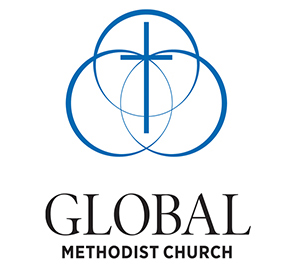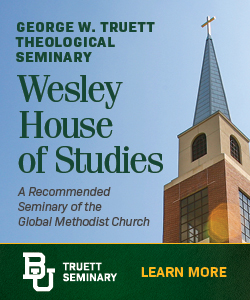The United Methodist Church’s General Council on Finance and Administration (GCFA) reported a 2.9 percent decline in weekly worship attendance from 2014 to 2015. Some observers merely shrug when they hear about a 2.9 percent loss. It seems deceptively inconsequential.
The stark truth is that a 2.9 percent decline means a loss of 82,313 worshippers, the largest loss in the denomination’s 48-year history. On average, UM local churches in the U.S. collectively welcomed 2,832,239 to worship services each weekend in 2014. That number dropped to 2,749,926 in 2015.
The figure is considered a key indicator of the health and vitality of the church, and it is an important number for helping the GCFA construct the quadrennial budgets for the general church. Last year, when the GCFA learned that average worship attendance fell 2.6 percent from 2013 to 2014, it revised downward its budget proposals for the 2016 General Conference delegates.
While a 2.9 percent decline from one year to the next does not immediately threaten the church, cumulative drops of two percent or more are cause for grave concern. In four of the last six years the denomination has seen drops above that threshold.
Throughout much of the 1970s, 80s, and 90s, average worship attendance declined, but not precipitously so. While the rate dropped overall, there were years when average worship attendance actually increased. (The last time the denomination registered an increase in worship attendance was 2001, when the figure grew by 1.7 percent. Many church statisticians considered that rise an anomaly due to a resurgent, but brief interest in church attendance shortly after the 9/11 terrorist attacks. The UM Church was not alone in seeing an increase in 2001.)
“Between 1974 and 2002, we lost an average of 4,720 in worship attendance per year,” said Dr. Don House, a professional economist and former chair of GCFA’s Economic Advisory Committee. “But a major shift occurred in 2002. The rate skyrocketed to an annual rate of 52,383 between 2002 and 2012, and now we’ve seen losses of 62,571 (2012-2013), 75,671 (2013-2014), and 82,313 between 2014 and 2015. This is not sustainable.”
Generally, declining rates of worship attendance have a knock-on effect. As local churches see fewer and fewer worshippers, they find it harder to stem their declines. Eventually, they discover they can no longer afford a full-time pastor, which only exacerbates their situations.
More broadly, the denomination then struggles to recruit new pastors, particularly younger ones with families and college debt. People considering full-time ministry justifiably wonder if there would be a local church appointment available that could pay a decent salary with health and pension benefits.
Calculations like this ultimately impact the church’s seminaries in declining enrollments, leading to reduced staffing at the institutions, and even threatening their viability. In short, the drop in worship attendance erodes the very infrastructure many believe is necessary to reverse the downward trend.
In a 2014 report to the GCFA and the Connectional Table, the denomination’s highest administrative body, House warned that the church needed to quickly adopt a credible and metrics driven plan to arrest the plunge in worship attendance. If it failed to do so, he projected that by 2030 the denomination would slide into permanent decline and face collapse by 2050.
When House prepared his report he possessed attendance records through 2013. Based on the figures at hand he projected an annual rate of decline of 1.76 percent, but the numbers from the last three years (2.1, 2.6, and 2.9) are well above that rate.
“If we experience a growing rate of decline, as demonstrated since 2012,” said House, “our window for a turnaround strategy will be shorter than I originally projected. We cannot maintain the connection unless we are able to implement and fund a strategy within the next 14 years.”
All five jurisdictions in the U.S. experienced average worship attendance losses in 2015. The Western jurisdiction led the way with a drop of 3.6 percent followed by the Northeastern (3.5), North Central (3.2), South Central (2.8), and the Southeastern (2.5).
Four of the 56 U.S. annual conferences actually bucked the downward trend with increases in attendance: Yellowstone (9.5 percent), West Virginia (4.3), Dakotas (1.7), and Peninsula-Delaware (1.1).
Conferences with the steepest losses were: Eastern Pennsylvania (7.3 percent), New Mexico (6.8), Susquehanna (5.7), and Dessert Southwest (5.4). Between 2014 and 2015 the Eastern Pennsylvania Annual Conference saw one of its largest and fastest growing local churches exit the denomination.
Various reasons for the decline in attendance have been cited.
There is general agreement that many local churches are located in areas where the general population has been declining for years (e.g., western New York and Pennsylvania, and across the upper Midwest and Great Plains states). When these churches were planted in the 19th century their locations made good sense, but now, due to declining population, they are difficult to sustain. It is also true that UM Church members are an aging population, so some of the decline in average worship attendance is simply due to attrition.
These natural declines are not being offset by local church growth in the major metropolitan areas clustered along the coasts, across the south, and in other urban areas where other denominations and non-denominational churches are either holding their own or seeing increases. For instance, the UM Church has only a few large, growing congregations in the densely populated urban areas of the northeast and the west.
Of the approximately 32,100 local UM churches in the U.S., 76 percent (24,654) average less than 100 in attendance, and nearly 70 percent (16,909) of those actually average less than 50 on Sunday morning. Local congregations below that threshold are often challenged to afford a full-time pastor or to find the resources necessary for a sustained plan of evangelization.
Beyond the reasons cited above, there is considerable debate as to why worship attendance has fallen for the past 14 years straight, and why the rate has accelerated so dramatically in the past five.
Many progressives and some centrists argue the church is woefully out of step with the broader culture, particularly with millennials. They claim the church is actually alienating many people with its stands on social issues, particularly those having to do with sexual ethics and marriage.
Traditionalists and other centrists argue the church has lost its evangelical zeal, and also claim the Council of Bishops’ public failures to maintain the good order of the church has undermined local church effectiveness, sapped the morale of clergy and laity who have come to distrust their leaders, and driven members away from its congregations.
Despite the record loss for the denomination, many local churches continue to thrive, grow, and show signs of health and vitality in the ministries they undertake every day.
“I am confident,” said the Rev. Rob Renfroe, president of Good News, “that when we United Methodists are at our best, we have a message that will win people to Christ, transform lives, and send out dedicated disciples to the last, the least, and the lost. I’ve seen it happen over and over again in many different places. But given the crisis we are facing, we must be prepared, going forward, to consider bold ideas and implement major structural changes.”
Walter Fenton is a United Methodist clergy person and an analyst for Good News.






The majority of members are not going to put up with the continued ultra agenda that is not biblical and moderate to conservative. People are voting with their feet since the Bishops are deaf to their comments
Methodist clergy need to take the safety of American citizens just as seriously as our President. Clergy engaging in issues such as immigration, boarder security and supporting sexual ethics contrary to biblical teachings and our Discipline undermines the confidence of lay people in the United Methodist Church. Such political action could help explain the decrease in attendance and the pulling away of some UM churches. I attend a UMC with a worship attendance of about 2000 each Sunday which emphasizes prayer and salvation.
There are many reasons why the UMC has declining membership. Other mainline churches are facing this issue, too. The churches that have large memberships are two types.
1. Churches, such as those like the one pastored by the Rev. Dr. Adam Hamilton, who does not discriminate, and wants full inclusion for all our brothers and sisters. Younger people have LBGT friends, relatives and do not want their loved ones to be disenfranchised.
2. Mega Churches that have large choirs, orchestras, food banks, community meals, and low cost, but reliable day care.
The challenge is indeed rebuilding the Church in the Metro areas. Its where there is a large enough mass of people to make a difference. The problem is that the UMC has abandoned the Major Metro areas over the last 20 years. DS’s have closed hundreds of congregations or forced mergers which drove people away. These empty places did not remain empty. The Baptist church has made massive inroads and so has the E-Free church and many small independent churches. Ironically these new congregations are in our old buildings!! So yes there are people and yes they want to yes to God. But they are clearly saying NO to the UMC. What is it about the UMC that turns off so many people. I would argue that we are too conservative for many Metro areas. The other denominations have long reasoned that their future lay in the exurbs and heavily White Suburbs. Maybe we need to accept the fact that the UMC isn’t meant to be a diverse church and isn’t meant to be a big tent church and contract. Stay true to who the UMC is and maintain conservative values but understand that the church in the US will contract and the mission footprint will decrease as a result.
Interesting comment about people being disenfranchised. It happens on a larger scale than just the LGBTQIA….XYZ population. I have felt disenfranchised from my long time local UMC and I am female, white and heterosexual. My feeling of disenfranchisement began with some badly handled change to make the church “more relevant”; it continues because I spent 4 long disheartening years listening to a myriad of voices within the UMC beginning with GC2012 and concluding with GC2016. I now realize what a disjointed mess the denomination is. The local church used to be my “sacred space in the howling wilderness”; now it and the denomination feel like their own version of a “howling wilderness”.
I am afraid that giving to a church who advocates homosexuality and whose leadership at the highest levels is anti-Israel has a sickening effect on some devout parishioners. In conscience they have to find other avenues to give too. This has been a creeping problem over the years but with the morals of our country seemingly on a fast skid to the bottom, Christians are looking for preachers to lift high the Message of the Bible. But instead they get sometimes no moral incouragement from the Sunday sermon. As one person told me the Church is not relevant, it is like sitting down to hear words of the Bible like on a third grade level. The preachers are either too liberal or avoid telling their aging population about issues of real concern with Biblical solutions for today. They are insulted. Our preachers have come from very liberal seminaries for the most part and the people of the pew are conservative. We need on fire Biblical preachers.
AMEN!!!
I found the expression “does not descriminate” interesting., especially when a large minority of the Global UMC is advocating for “separate, but equal.” Well, what do I mean by that?
If anyone believes that Methodists from Africa are backwards or not yet enlightened as an enlightened group may believe that it is, the enlightened group makes the case that the Denomination should remain in unity, however, church “A” can decide to handle things one way while church “B” can handle things a different way. Like society, they can vote, like society; they can disregard the Discipline and, like society, they can disregard or re-interpret the Bible-Seperate, but Equal.
Satan is not going to make a counterfeit $3.00 bill. He is going to make a very good $20.
Many of us find the reports from the mega-churches, and their headcount-metrics and we are almost convinced of a new-way. Some of us read the old-way, found in Acts, when the Ethiopian Eunuch was converted and asked to be baptized. Penatcost stands out as an anomaly and Jesus’ examples are usually one-on-one.
May you find the kind of church which suits your needs, but may it challenge you -and all of us- to test everything!
The Church has abandon the small churches they don’t seem to feel any need for them anymore. All those in the leadership are more concern with the mega churches and they seem to care less about the small congregations. The Methodist Church in my day grew because we had small, middle size and large churches and they all worked together, now its seems they have the My Way or the highway attitude and the heck with anyone who doesn’t measure up to their standards. This attitude shows up in the attendance because the people don’t feel anyone cares about them anymore. They come in close all the small churches take away their buildings and land that these people paid for and maintain for years, sell it and take the money and use it the way they want to. This is not right any way you want to put it and the people are beginning to see whats happening and staying away from the church. This will continue to get worst if we continue on this path.